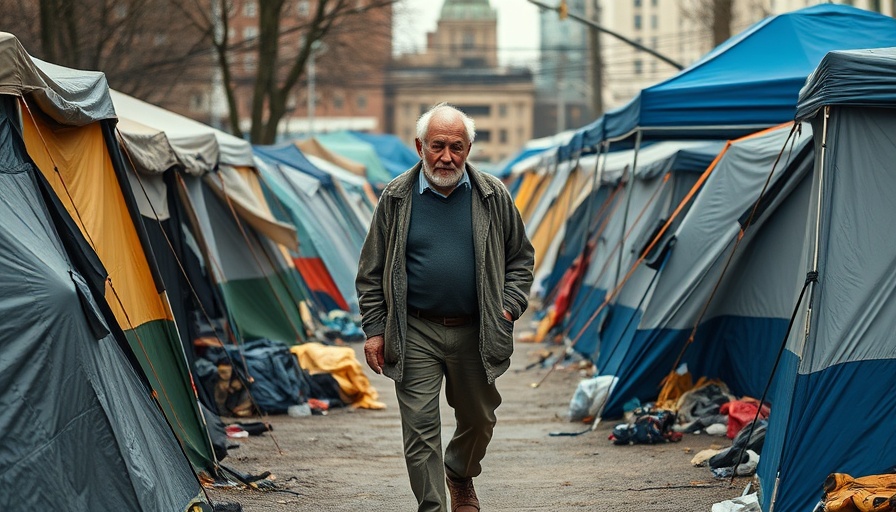
Understanding Homelessness Through Health: A Crisis Unveiled
As the sun rises over Denver, a long-time physician, Dr. Sarah A. Stella, lights a path illuminating the intersection of health and homelessness. For two decades, Dr. Stella has witnessed the severe impacts of living without stable housing on individuals' health, particularly in emergency care settings. Her experience exposes a staggering truth: people experiencing homelessness like Mr. D, a regular patient, often fall through the cracks of a system designed to catch them. The numbers tell a troubling tale. In 2025, over 10,000 individuals were counted as experiencing homelessness in metro Denver, with many more unrepresented due to the invisible nature of their plight.
Hidden Costs of Homelessness
The costs of homelessness extend beyond the absence of shelter. They encompass a cycle of severe health issues that can escalate into chronic diseases, including diabetes and infections, which Dr. Stella frequently encounters. Patients like Mr. D illustrate the profound health risks: without access to routine medical care, manageable conditions can transform into life-threatening situations. In hospitals, Dr. Stella sees over 16,000 patients experiencing homelessness annually, yet this number likely underrepresents the reality. Many individuals avoid hospitals altogether for fear of stigma or lack of resources, thus exacerbating health disparities in the community.
Structural Barriers to Housing
Dr. Stella has become a powerful advocate, working to bridge the gap between healthcare and housing solutions. However, recent federal actions threaten to widen these cracks further. As housing costs rise and availability plummets, many Coloradans find themselves unable to afford even the most basic accommodations. A recent report highlighted that Coloradans would need to work over 80 hours a week to afford a one-bedroom apartment—a stark reminder of the crippling financial barriers many face. This financial instability contributes to great distress and deteriorating health, creating a vicious cycle that is hard to escape.
The Importance of Integrated Care
Dr. Stella’s work embodies a critical interdisciplinary approach aimed at addressing these complex challenges. By creating partnerships between healthcare facilities and housing organizations, she strives to provide patients with a lifeline—a pathway toward stable living conditions that can reverse the deterioration of health. Integrated care could serve as a model for addressing health and homelessness nationwide, underlining a pivotal reality: Health is a fundamental right, and secure housing is a cornerstone of that health.
Hope Amidst Challenges
Despite the daunting challenges faced by individuals experiencing homelessness, Dr. Stella remains hopeful. There is a growing awareness and commitment from various sectors to tackle these issues. Initiatives that combine health services and housing resources hold the potential to not only alleviate immediate health problems but pave the way for lasting improvements in patients’ overall health and well-being. By taking a holistic approach to treatment, we can optimize healthspan—a concept that emphasizes health longevity—significantly impacting the lives of those in vulnerable situations.
Community Involvement: A Call to Action
The importance of community involvement in addressing homelessness cannot be overstated. By engaging local businesses, nonprofit organizations, and ordinary citizens, a collective action can begin to chip away at the societal issues surrounding homelessness. Whether through volunteering time, donating resources, or advocating for policy changes, every bit counts. Dr. Stella illustrates that community support plays a pivotal role in driving systemic change. So, let’s come together to foster a more inclusive and healthier community for everyone.
The challenges surrounding homelessness may seem overwhelming, but with concerted effort and collaboration, a healthier future is within reach. In the words of Dr. Stella, “Change begins when we recognize the humanity in everyone around us, and together, we can create pathways to not just survive, but thrive.”
 Add Row
Add Row  Add
Add 




Write A Comment